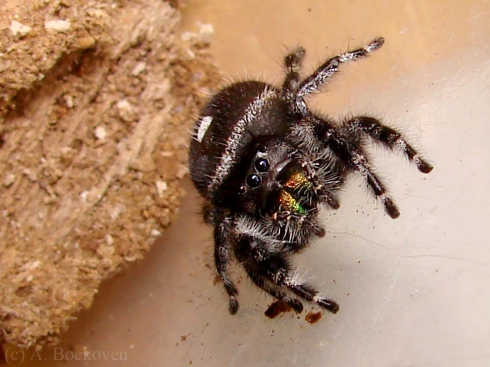I ran into this lovely individual while attending the Ants of the Southwest course at the Southwestern Research Station in Arizona. I’ve always had a soft spot for the charismatic jumping spider, and the widespread bold jumping spider –similarly marked in Halloween orange and blacks– is one of my favorites (and one I’ve posted about here before). The spider pictured here, however, has the distinction of being easily the biggest jumping spider I’ve ever seen.
In fact, this individual turns out to be a close cousin to the bold jumping spider, a member of the genus Paraphidippus (“beside Phidippus”) rather than the genus Phidippus. Other than that, I can’t find much information about P. basalis. There are pictures of it tagged from Arizona and New Mexico, and Discover Life’s only data point comes from the New Mexico biodiversity collection. Two people on Bugguide report finding it on agave plants in Arizona (mine was found crossing a trail in the vicinity of agave).
This spider may also look familiar to you for other reasons: According to Wikipedia, its more common sister species, Paraphidippus aurantius, was the model for the giant mutant spiders that terrorized the Arizona mining town in the humorous horror movie Eight Legged Freaks.













Recent Comments